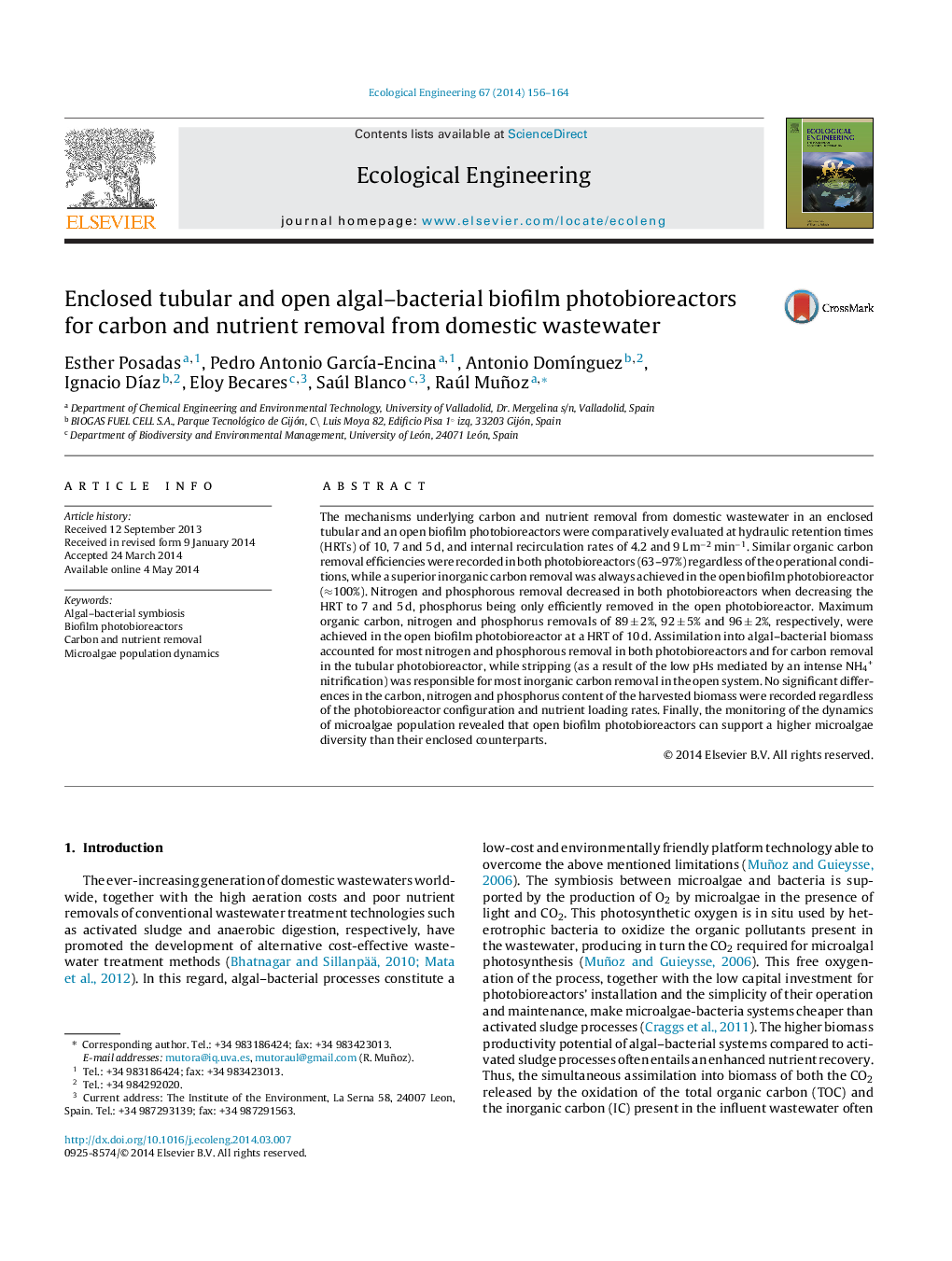| Article ID | Journal | Published Year | Pages | File Type |
|---|---|---|---|---|
| 4389426 | Ecological Engineering | 2014 | 9 Pages |
•Higher carbon removals in the open algal–bacterial biofilm due to stripping.•Similar nitrogen removals in enclosed and open algal–bacterial biofilm bioreactors.•Effective phosphorus removal only in the open algal–bacterial biofilm bioreactor.•Similar biomass composition regardless of the operational stage and photobioreactor.•Higher microalgae biodiversity in the open biofilm photobioreactor.
The mechanisms underlying carbon and nutrient removal from domestic wastewater in an enclosed tubular and an open biofilm photobioreactors were comparatively evaluated at hydraulic retention times (HRTs) of 10, 7 and 5 d, and internal recirculation rates of 4.2 and 9 L m−2 min−1. Similar organic carbon removal efficiencies were recorded in both photobioreactors (63–97%) regardless of the operational conditions, while a superior inorganic carbon removal was always achieved in the open biofilm photobioreactor (≈100%). Nitrogen and phosphorous removal decreased in both photobioreactors when decreasing the HRT to 7 and 5 d, phosphorus being only efficiently removed in the open photobioreactor. Maximum organic carbon, nitrogen and phosphorus removals of 89 ± 2%, 92 ± 5% and 96 ± 2%, respectively, were achieved in the open biofilm photobioreactor at a HRT of 10 d. Assimilation into algal–bacterial biomass accounted for most nitrogen and phosphorous removal in both photobioreactors and for carbon removal in the tubular photobioreactor, while stripping (as a result of the low pHs mediated by an intense NH4+ nitrification) was responsible for most inorganic carbon removal in the open system. No significant differences in the carbon, nitrogen and phosphorus content of the harvested biomass were recorded regardless of the photobioreactor configuration and nutrient loading rates. Finally, the monitoring of the dynamics of microalgae population revealed that open biofilm photobioreactors can support a higher microalgae diversity than their enclosed counterparts.
